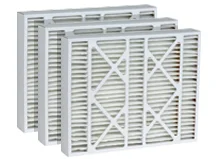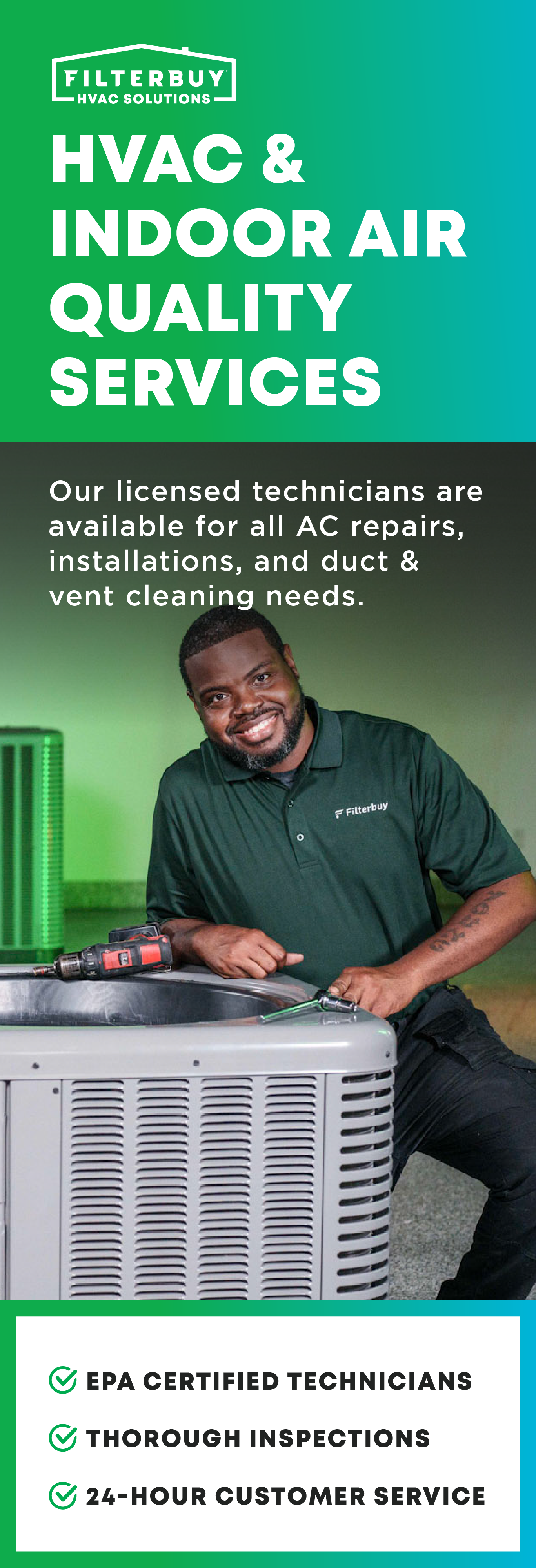How many times have you used a home air quality test? If you’re like most Americans, you’ve never tested your home air quality - but really should. Here are some stats from the WHO to prove it:
- The WHO estimates that 90% of people around the world breathe in polluted air to some degree.
- 93% of kids under 18 years old live in environments where there’s air pollution over WHO’s acceptable levels. (related: cities with the worst outdoor air quality)
You can’t control the air quality outside, but you can influence it inside your home – in fact, it’s the best defense against poor outdoor air quality. Indoor air quality testing is easy to do and can dramatically improve your quality of life. There are also monitors that test home air quality for hazardous pollutants and there are things you can do to improve the air quality inside.
Do I Need Testing?
Symptoms of Bad Air Quality In Your Home
It doesn’t take much for air to become polluted enough to affect people with respiratory problems and sensitivity to air pollutants. It can cause a number of side effects in addition to causing potentially life-threatening illnesses. Look for symptoms like:
- Worsening allergies or asthma
- Congestion
- Headaches
- Eye, nose and throat irritation
- Shortness of breath
- Skin rash
- Fatigue
- Dizziness
- Nausea
- Frequent colds/illness

You’ll take between 17,280 and 23,040 breaths every day. That’s 17,280-23,040 reasons to test indoor air quality and purify the air you breathe.
Sources of Bad Indoor Air Quality
If you are having some of the symptoms, air quality testing can help you figure out the cause of it. By knowing what air pollutants you are dealing with, you can quickly determine how much worse they will make your symptoms. Air pollution can come from many sources inside and outside of the home. Some pollutants are simply irritating while others can cause serious illness.
Low-Threat Air Pollutants
- Dust
- Pet fur
- Dander
- Allergens
High-threat Air Pollutants
- Mold spores
- Asbestos particles
- Smoke
- VOCs
- Toxic fumes from cooking fuels
- Lead
- Radon
- Carbon monoxide


Read More: Everything You Need To Know About Indoor Air Pollution
How to Test Indoor Air Quality
How can I test air quality in my home? Can I even test the air quality on my own? Do interior air quality testing products actually work?
Yes, yes and yes. But if you want to do a thorough inspection of the air quality, you’ll probably have to use a few interior air quality testing kits. That requires identifying which air pollutants you want to monitor and measure. Below are the various methods for checking the air quality in your home:
Deciding Which Indoor Air Quality Testing Kits to Buy
Air quality is different from one home to the next. It’s a combination of location and lifestyle factors. A good place to start is checking the Air Quality Index (AQI) for your city. It will give you an idea of which outdoor pollutants are most common in the area.
You’ll also need to do an assessment of your home. Have you done recent renovations that could be causing higher than normal VOC levels? Do you have a fireplace? Are there pets in the home?
Considering your needs upfront is important because some indoor air quality testing kits specifically look for pollens, dust and allergens. Others look for a single toxic pollutant like carbon monoxide. Base what you buy on your specific needs.
Home Air Testing for Mold
Mold is extremely common. Sometimes it’s completely harmless and other times it can be deadly. Measuring mold levels in a home requires a professional inspection. There are at-home testing kits, but they will only tell you if mold is present (low levels of mold are almost always in the air). They won’t tell you if there is an excessive level of mold or what kind it is.
A professional can measure mold levels inside your home and outside of it to compare the results. This will tell you if the level is high. The technician can also help determine the source or the mold and what type it is.
Carbon Monoxide Testing
Carbon monoxide is a colorless, odorless gas. According to the Centers for Disease Control (CDC) 430 people die from CO poisoning each year. Another 50,000 have severe reactions that land them in the ER.
If gas is used in the home, then carbon monoxide detectors can be installed in a fashion similar to a smoke detector. The monitors should be affixed to a wall about five feet off the ground but not directly over gas appliances or a fireplace. Once installed the monitor will continuously measure carbon monoxide levels and will sound an alarm if they’re detected.
Radon Testing at Home
Radon is a toxic gas that can leech out of the ground. Like carbon monoxide, radon is colorless and odorless. It’s been found in all 50 states and is known to cause 21,000 cases of lung cancer death every year.
The gas can escape from the soil and seep into homes from cracks in the foundation, floors and pipes. Radon testing may sound high-tech but it’s really simple for any homeowner. There are short-term and long-term radon testing kits. A long-term radon tester works just like a carbon monoxide monitor. Since radon comes from the ground it’s best to put long-term testing devices on the ground floor if the home isn’t a single-story.
Short-term radon testing kits come with a device that’s placed in a high-risk area of the home. It will stay there for a specified period, then you send the device back to the manufacturer for analysis. Some tests are left out to collect samples for just a few days while others are meant to collect samples over the course of months.

Testing for Allergens Inside With an Indoor Air Quality (IAQ) Monitor
An indoor air quality (IAQ) monitor is kind of a jack-of-all-trades. IAQ monitors are designed to detect a variety of particulate matter (dust, pollens, dirt, etc.) that can irritate allergies. You may even be able to find one that also monitors carbon monoxide, carbon dioxide and chemical pollutants.
An IAQ monitor looks like a programmable thermostat. It has a display screen that provides a readout of different pollutant levels. The readings are real-time and some can give you an overall air quality assessment.
DIY vs Professional Air Quality Testing – Which Do You Need?
DIY in home air quality test kits can be relatively inexpensive and easy to use to get you started. DIY air testing kits are easy to use. This is especially true in the era of the smart home, where these testing sensors can be compatible with other smart home technology.
On the other hand, the accuracy of these tests varies. In particular, at-home mold tests are notorious inaccurate. When you get a professional service to do a test, you get the benefits of accuracy and greater detail in the test results.
If you know you have health issues that are heavily reactive to indoor air pollution, the professional test is worth the extra expense, particularly if you are sensitive to mold.
How to Improve Indoor Air Quality
Besides regular testing of home air quality, these are some steps you can take to improve your indoor air quality. They include:
- Replace your air filters regularly.
- Keep potted plants indoors.
- Reduce carpeting and cloth surfaces.
- Ventilate kitchens and bathrooms well.
- Don’t smoke indoors.
- Audit your ventilation system and fix any issues.
- Use an air purifier and humidifier.
- Regularly open the windows to let fresh air inside.
- Open windows when you are using cleaning products.
- Purchase low- or no-VOC products.
- Put equipment and other sources of pollutants in well-ventilated areas.
Simple things can make a huge difference in the air quality inside. In addition to these steps, it’s best to keep the temperature between 68.5 and 80 degrees depending on the season. Humidity levels should be kept between 30-60% to prevent mold growth.
Read More: Your Complete Guide to Ways to Improve Indoor Air Quality
If you need an easy way to get started on your home air quality improvement, start here with replacing your air filters. We’ll make and ship you your perfect air filter for your home. Start here, and call our customer support line if you need any further assistance!

.webp)
.webp)
.webp)
.webp)







